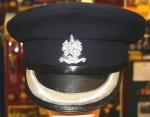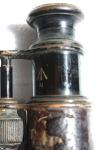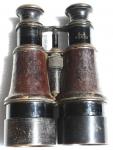-
Posts
13,225 -
Joined
-
Last visited
-
Days Won
22
Content Type
Profiles
Forums
Blogs
Gallery
Events
Store
Everything posted by Mervyn Mitton
-
Hi - Stuart. Still waiting for the skype phone to be sorted out. Seeing this interesting drawing, with four panels makes me wonder how many panels in our old police helmets ? They are, basically, the same construction and I know have cork as insulation/padding - what I can't remember , is was it four or, six sections. Perhaps you might know ?
-
Hi - Darrell. I would say ' borderline ' - it has been in contact with something which has caused slight corrosion. However, if it were mine, I would leave it - the original patina is part of the colour. Apart from that, Relief of Ladysmith is some £450 ( $750) so a good reason to leave alone. However, Chris does have a good point - and it is one I have mentioned a few times. Within a few months cleaned silver will recover it's patina - just perhaps not the gleam that comes with age. I bought two great groups this morning and will try to post them next week - you will want to extend your interests when you see them - well, some you already have ....
-
Strictly speaking, these two rare items should be under our General Zulu heading. However, because of their double use as a stabbing weapon I am including them under spears. During the Anglo-Zulu War of 1879, there were a number of occasions when the British Infantry fixed bayonets and charged. This caused great consternation with the Zulu warriors - they were used to fighting with spears, but, this was the first time they had encountered bayonets in battle. Remeber this was the Martini Henry single shot rifle - which is a long weapon - and the bayonet is triangular shaped and also long. The effect therefore, was to give a reach of some 9 feet ( 270 cm) when the arms are extended. Accounts of the time show that the Zulu warriors were really 'nervous'. I have explained previously that all metal working by the Zulus was from 'guilds' or, 'clans'. Chiefs who had encountered bayonets had the smiths change some of their axes into an elongated form - similar to a bayonet. Axes were not carried by the warriors - only chiefs and royalty - they were a status symbol and very expensive. Axes are rare - bayonet axes even more so. These are a matched pair and almost certainly came from the man who owned the Royal spear with the long blade shown earlier. They all came-in at the same time. They probably date from around 1900 and most probably part of his regalia. One in the right hand and the other behind the shield with a knobkerrie (Iwisa) and an Iklwa. Although they look similar, there are clear differences in the blades and also on the carved handles.
-
Durban City Police in South Africa, originated in the 1840's and grew with the City to become one of the best Colonial Police Forces in the World. This cap was for an Inspector and dates from the 1970's. The uniform, coat of arms and name were all changed after 1994. They are now known as the Metro Police....
-
Home Office instructions clearly laid down that Rattles were to be carried as a means to raise an alarm and warning. During the 1880's tests were carried out between rattles and whistles to establish which could be heard at the greatest distance and whistles won by a clear margin. I think it was in 1883 that the Metropolitan Police issued whistles - however, they had a cork ball and were of a rather strange shape - in outline not dis-similar to your button whistle. Because they were bulky in the tunic they were changed to Hudson's tubular style - although there were many variations. I will be doing a post on 'Raising the Alarm' - however, we must wait for the new Police Section to see the form it will take. The Night Sticks you refer to were capped walking sticks carried by Sergeants' as a mark of status and to signal the constables to come into to them to receive instructions. They did this by tapping the metal ferrule on the old tramlines or, on the pavement. Some Forces still carried them in the 1930's. I was not aware that some Forces had adopted these button whistles - some of the Watch Committees and the Chief Constables - who in those days were usually ex Army Officers - were quite eccentric and would have made the decision on their own. The style is well known for the Army - but again, I dont think great numbers were ever made. They are very collected by the whistle enthusiasts - which is a surprisingly large field - particularly in the U.S. I believe the Hudson style of whistle can now sell for in excess of £35 ($50). Probably more if they are named to a Force. Mervyn
-
We carry signed copies of Owen's book - the cost, set by him, is R600 + postage. IM or, email me (on profile) if you are interested.)
-

1st. WW BOXED M.C.
Mervyn Mitton replied to Mervyn Mitton's topic in Great Britain: Orders, Gallantry, Campaign Medals
I think one of the nice things about this medal and it's box , is that it is in original untouched condition. So often they get messed about with. Not ' trying to teach how to suck eggs ' - but perhaps for non-collectors looking, this medal is sterling silver and was first created in 1916. They did not add hallmarks on the reverse until after 1937. -
Hi - Kevin. The Metropolitan Police Act of 1824 is even more detailed then these - and is still in force today - well most of it. We often used it to deal with minor nuisances. The Corporation and Town Acts were all based on the London one. I was particularly interested in the 'button whistle'. For your info. this is the first I have ever seen for a Police Force. They were regularly made for the military and normally date to the early 1800's. This one is then , for a later period. I would think made at home and pronbably not carried by a constable. Rattles were taken over by a different style of whistle - firstly with a pea and then the air type. I wonder if you have any history on this one that would show Police use ? The tipstaffs are of a ' baluster ' style common in the Manchester area - and of course spreading out from there. The ' 1 ' on both staffs was intended to show that Queen Victoria was the 1st of Her line. She came to the throne in 1837 and by about 1843/44 they stopped putting the 1st. Just no point when there had been no-one else of that name. They are otherwise, almost identical to all of the baluster tipstaffs. I found on my photographs a nice early Victorian Bradford Special Constables truncheon with the Boer's Head. I must have more in the UK - the problem is accessing them. Keep going - Brian could soon have the largest subject post on the Forum...... Mervyn
-
Hello Lion - wlcome to GMIC. I was sorry that no-one has answered your query, but I would think the simple answer is that unless a Sth. African collector picks-up on it , then no-one will be quite sure. I have never found the old homeland States to be very collectable - but then they have been gone for some years now and are no doubt quite rare. The first one for paras - looks to be of quite good quality - but from the sticky patches on the back it looks to have been on a number of boards - but, no sign of wear apart from that. I can't even remember if they had a para-wing - I know they had that fleet of German Helicopters. I would say , from appearance that this looks OK. However, the other one is roughly made and in poor detail. Probably the one that will be genuine.... Have you looked in Owen's The Badges Of South Africa ? There is a section on flashes and cloth badges.
-

1st. WW BOXED M.C.
Mervyn Mitton replied to Mervyn Mitton's topic in Great Britain: Orders, Gallantry, Campaign Medals
Thankyou - Gunner 1 - wonderful to have that confirmation. I am waiting for the seller to let me have his details and if different will add. Mervyn -
I was quite surprised with the amount of interest shown in the periscopes. However, it is these 'forgotten' little items that often do arouse interest, since we seem to rarely see them. Last week I bought an early pair of binoculars - they had history to both the Boer War (1899-1902) and to WW1 - however, they are very much in the style of those used in the Zulu War (1879) and being from a South African family this is more than possible. Since we have in stock dated examples of WW1 and WW2 I thought I would show all three to show the changes in style. All have the Broad Arrow of the Board of Ordnance and so are designated for the military. Binoculars really only came into use in the 1870's and prior to this small telescopes were used. They would have been for officers only.
-

UK products.
Mervyn Mitton replied to wiggles's topic in Preservation & Restoration of Military Artifacts
Hi - Wiggles (just love your nickname - origins ?). WD 40 is fine as a lubricant and for helping to clean the blades - however, gun oil is better for long term protection. -

1st. WW BOXED M.C.
Mervyn Mitton replied to Mervyn Mitton's topic in Great Britain: Orders, Gallantry, Campaign Medals
-

1st. WW BOXED M.C.
Mervyn Mitton replied to Mervyn Mitton's topic in Great Britain: Orders, Gallantry, Campaign Medals
-

1st. WW BOXED M.C.
Mervyn Mitton replied to Mervyn Mitton's topic in Great Britain: Orders, Gallantry, Campaign Medals
-

1st. WW BOXED M.C.
Mervyn Mitton replied to Mervyn Mitton's topic in Great Britain: Orders, Gallantry, Campaign Medals
-

1st. WW BOXED M.C.
Mervyn Mitton posted a topic in Great Britain: Orders, Gallantry, Campaign Medals
Following Paddywhack's post on his MC and it's condition - this is the one I mentioned I was waiting for. The box has protected the patina and it will not be touched. Haven't had a chance to do any research - if anyone could find his unit that would be great. Prob. British - but, could be Sth. African. The note gives his name, but looks as if it may have been cut and taken an 's' off the end.
















